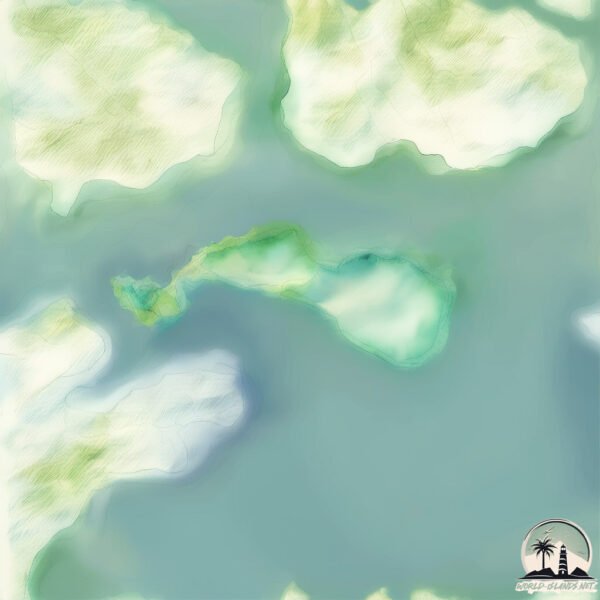Welcome to Agoko , a Tropical island in the Gulf of Guinea, part of the majestic Atlantic Ocean. This guide offers a comprehensive overview of what makes Agoko unique – from its geography and climate to its population, infrastructure, and beyond. Dive into the details:
Geography and size of Agoko
Size: 0.97 km²Coastline: 5.6 kmOcean: Atlantic OceanSea: Gulf of GuineaContinent: Africa
Agoko is a Tiny Island spanning 0.97 km² with a coastline of 5.6 km.
Archipel: –
Tectonic Plate: Africa – One of the world’s largest tectonic plates, covering the African continent and parts of the surrounding oceans, known for its stability with some active rift zones.
The geographic heart of the island is pinpointed at these coordinates:
Climate and weather of Agoko
Climate Zone: TropicalClimate Details: Tropical Savanna, WetTemperature: Hot
Climate Characteristics: Defined by distinct wet and dry seasons with high temperatures year-round. Pronounced rainfall occurs during the wet season, while the dry season is marked by drought.
Topography and nature of Agoko
Timezone: UTC±00:00Timezone places: Europe/LisbonMax. Elevation: 3 m Mean Elevation: 3 mVegetation: Evergreen Broadleaf ForestTree Coverage: 36%
The mean elevation is 3 m. The highest elevation on the island reaches approximately 3 meters above sea level. The island is characterized by Plains: Flat, low-lying lands characterized by a maximum elevation of up to 200 meters. On islands, plains are typically coastal lowlands or central flat areas.
Dominating Vegetation: Evergreen Broadleaf Forest
Vegetation: 2 vegetation zones – Low Diversity Island
Infrastructure and Travelling to Agoko
Does the island have a public airport? no .
Does the island have a major port? no .
The mean population of Agoko is 2541 per km². Agoko is Densely Populated. The island belongs to Ivory Coast .
Continuing your journey, Île de Petit-Bassam is the next notable island, situated merely km away.
Ifeku Brief history documentary HD
There can be no history without events. Since today is the tomorrow we dreamt of yesterday, any meaningful periscopic view of ...
Ifeku Brief history documentary HD
There can be no history without events. Since today is the tomorrow we ...
There can be no history without events. Since today is the tomorrow we dreamt of yesterday, any meaningful periscopic view of ...
accountabilitypartner #compensation #trust. Want to find out what I do ...
How to START || An Engineer's Perspective!
Gael Murara gave some real insights into how he got started and ...
Gael Murara gave some real insights into how he got started and eventually succeeded through humility and curiosity. Check out ...
Ivory Coast is classified as Developing region: Regions characterized by lower income levels, with economies in the process of industrialization and modernization. The level of income is Lower middle income.
News – Latest Updates and Headlines from Agoko
Stay informed with the most recent news and important headlines from Agoko. Here’s a roundup of the latest developments.
Loading...
Please note: The data used here has been primarily extracted from satellite readings. Deviations from exact values may occur, particularly regarding the height of elevations and population density. Land area and coastline measurements refer to average values at mean high tide.

